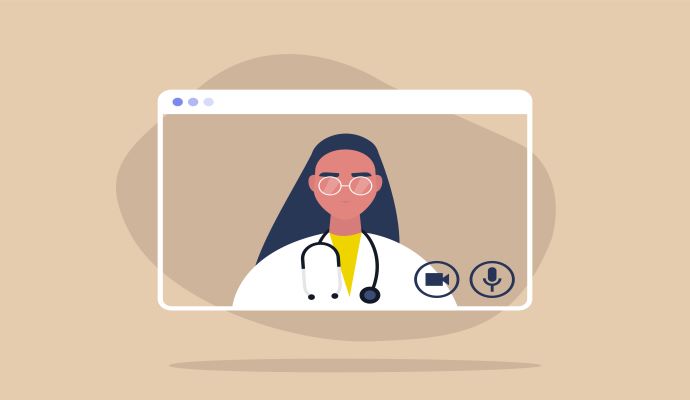Telehealth Does Not Boost Food Insecurity Screening
The uptake of telehealth during the COVID-19 pandemic did not increase food insecurity screening in primary care encounters, new data shows.

Source: Getty Images
- New research published in the American Journal of Preventive Medicine (AJPM) indicated that despite low food insecurity screening in first primary care encounters, in-person visits had higher screening rates than telehealth.
Linked to an increase in chronic diseases related to diet, food insecurity describes the lack of food-related resources required to maintain good health.
Although many healthcare providers support food insecurity screening, suggesting actions to combat this issue, the study indicated that only 30 to 40 percent of healthcare administrators involved in a survey shared that their organization had experience with the screening process between 2017 and 2018.
Researchers noted that due to systematic issues that grew during the COVID-19 pandemic, food insecurity became more severe. Telehealth, however, also became more widely used during this time.
The research team set out to examine rates for food insecurity screenings during telehealth visits versus in-person encounters amid the COVID-19 pandemic, before and after the vaccine became available.
To do this, they conducted a cross-sectional analysis that included EHR and ancillary clinic data from more than 400 community health centers. In 2022, they characterized food insecurity screenings with a sample of 275,465 first encounters, all for routine primary care from network clinics between March 11, 2020, and Dec. 31, 2021.
With this data collection, researchers used a random subgroup of 11,000 encounters to estimate screening prevalence during in-person or telehealth visits. They also examined whether the screening occurred during the initial phases of the pandemic or following the release of the COVID-19 vaccine.
Following a review of this information, researchers found that encounter type correlated with food insecurity screening. In-person visits had a 9.2 percent screening rate versus a 5.1 percent screening rate for telehealth visits.
They also found that the time of the visit influenced screening rates, as in-person and telehealth screening rates before the release of the vaccine were 7.8 percent and 5.2 percent, respectively. These figures changed to 11.7 percent for in-person visits and 4.9 percent for telehealth after the release of the vaccine.
Based on this data, researchers concluded that despite an overall low rate of food insecurity screening in first primary care encounters, the rates were especially low during virtual visits and those in the early stages of the COVID-19 pandemic.
These findings led researchers to also note that further research should consider potential steps for optimizing social risk screening methods, particularly within visits that take place virtually.
Previous research has similarly revealed gaps in telehealth-enabled care.
For example, data from Alabama’s standalone Children’s Health Insurance Program from April 2022 showed that telehealth disparities were rife within the system.
Specifically, data showed that children from rural areas were less likely to use telehealth and that those aged 6 to 12 used telehealth less than those aged 12 to 18. Socioeconomics also influenced telehealth use, with patients from lower-income families having lower odds of using telehealth.
Researchers noted that further research on increasing access and limiting disparities is essential.
